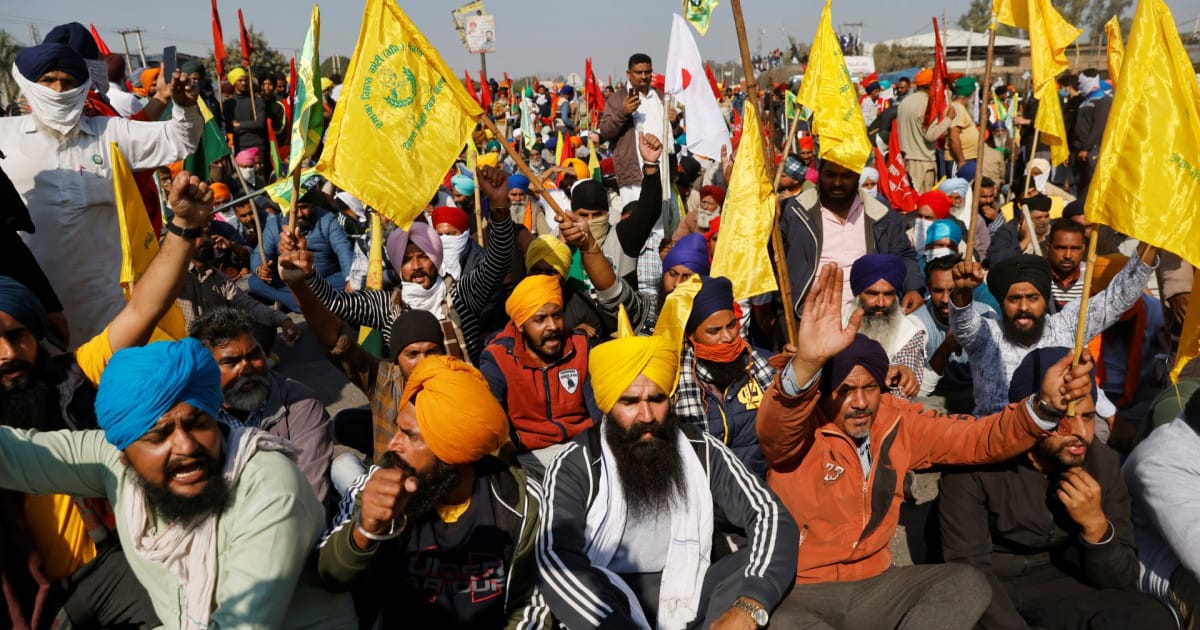The Indian Farming Reformation

By Abdul Basit, BA Economics and International Relations
Annadata is a Hindi epithet that has spiritual roots and can be roughly translated as ‘he who is the bestower of nourishment.’ It is often attributed to the farmers of India by its political classes, and this term perhaps best encapsulates the nation’s attitude towards its farmers. This artificial conflation of what is a standard occupation in most countries has led to the crisis in which India finds itself today. These protests are only the manifestation of decades of substance-less rhetoric.
Agrarian activities are still the primary occupation of 70% of the Indian labour force, according to the Food and Agriculture Organization of the United Nations. Rural India, which is where most Indians live, is still organised around farming. Therefore it is no surprise that any attempt to reform this sector is met with fierce, if not an ignorant backlash. However, that does little to dull the urgency of these reforms.
A fourth of India’s total agrarian output is wasted every year, and there are massive discrepancies in agricultural land holdings across the country which exacerbate the problem of hidden unemployment. The simple truth is that there is no relation between what the farmers are supplying and what people want to eat. Despite having the capacity to grow anything the Indian palate demands, we still import onions, potatoes, cauliflower, green peas, and more. In fact, India is the 7th largest importer of agricultural products in the world despite record-breaking harvests of rice, pulses, and sugarcane.
I invite the reader to consider the predicament of the Indian economy which employs almost 70% of its workforce in agriculture and related industries whilst simultaneously relying on food imports. All of the above are symptoms of backbreaking structural issues which require immediate and decisive change.
Now, this article does not opine that the Indian farming sector is inherently inept in its output, far from it. It regularly outdoes itself in terms of harvesting certain crops. Yet, due to poor demand for these crops, the Indian farmer is caught – better harvests mean lower prices per unit.
This brings us to the issue of the Minimum Support Price (MSP), the focal point of these protests. Simply put, it is a mechanism by which the Indian government ensures farmers that it will procure certain crops at fixed prices. This has led to farmers choosing, almost exclusively, to grow only such crops that the government will procure as it guarantees a buyer even though there is not nearly enough demand for them in the grocery stores.
This not only makes the job of storing these endless surpluses impossible but also ratchets up the MSP bill that the government bears whilst importing fruits and vegetables to meet the population’s needs. It is essentially a subsidy given to the farming sector in the form of a blank cheque. While these subsidies are intended to support farmers, it is estimated that only 6% actually sell their crops at MSP. This means that farmers are already vulnerable to the ‘middlemen’ in the selling chain and, ultimately, the Indian government’s process is ineffective.
The proposition that agriculture ceases to be the exclusive purview of farmers and the state, and instead includes private players, is a wise one. It will restore supply-demand balance in the sector, thus ensuring that farmers get a fair price for their labour. Precautions will still need to be taken to stop these private players from becoming monopolies, and floor prices will need to be established. However, such a step would obviate government-funded MSP programs which accounted for a whopping 50% of the National Budget last year.
“For too long, farmers have been used as a vote bank and each election cycle has brought with it promises of loan waivers and higher MSPs. Yet what Modi’s new laws envisage is an agrarian sector that can sustain itself without government handouts, as an independent part of the national project that is congruous within a market economy.”
It ought to be remembered that this government is not the first to realise that India’s farming sector does not work. It is simply the first in almost 50 years to have the political capital to do something about it.
For too long, farmers have been used as a vote bank and each election cycle has brought with it promises of loan waivers and higher MSPs. Yet, what Modi’s new laws envisage is an agrarian sector that can sustain itself without governmental handouts, as an independent part of the national project that is congruous within a market economy.
There is a lot to be said about how the Modi administration handled these bills by rushing them through the houses of parliament without consultation. I implore the readers to not judge the efficacy of these reforms by the reputation of their authors, but by the benefits they offer. It is possible for tyrannical governments to formulate agreeable policies. And these farm laws are an incandescent gem in what is otherwise a gloomy cavern of right-wing hysteria.
Photo caption: Farmers from the northern Indian states of Punjab and Haryana, angry at recently enacted farm laws, have been trying to stage protests in the capital, New Delhi (Credit: Dansih Siddiqui, Reuters).



